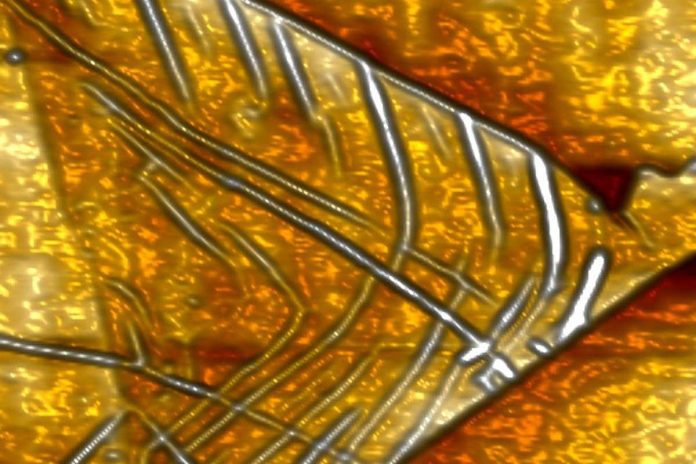[ad_1]

Nano origami with molybdenum disulphide
Manoj Tripathi
Sheets of carbon a single atom thick can be wrinkled to create functional microchips. This nano-origami technique could lead to smaller and faster computer processors.
Manoj Tripathi at the University of Sussex, UK, and his colleagues made a graphene sheet behave like a transistor by deliberately adding wrinkles that affected the flow of electrons. Because of the extremely thin material, the transistor is around 100 times smaller than the same device on a silicon chip.
Advertisement
Graphene is made of a single layer of carbon atoms and is often called a 2D material because it is theoretically as thin as a material can be. These sheets are strong and conduct electricity better than gold, but are prone to wrinkling. The influence of these deformations on electronic properties isn’t fully understood.
Using a technique called atomic force microscopy, the researchers were able to detect the effects of specific types and patterns of wrinkles, domes and holes.
“The defect is considered a negative part of material, but sometimes a defect gives you positive properties,” says Tripathi. “A kink has a different electrical and mechanical property. You’re able to generate a transistor.”
The researchers are now working on how to create exact patterns of deformation in graphene and other 2D materials like molybdenum disulphide to build working chips. They have been able to make uniform rows of wrinkles by laying sheets over patterned moulds and creating domes by firing lasers to expand the water molecules constantly present in ambient environments. They hope to have a functional prototype chip within five years.
Moore’s Law states that the number of transistors in a circuit will double roughly every two years. But the rate of miniaturisation has slowed in recent years as engineers reach circuit densities beyond which electrons cannot be reliably controlled. Graphene circuits could allow this shrinkage to continue.
Journal reference: ACS Nano, DOI: 10.1021/acsnano.0c06701
[ad_2]
Source link











